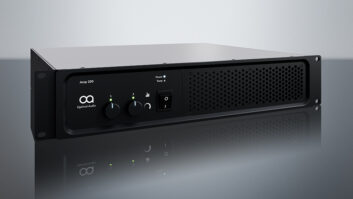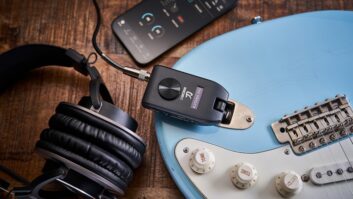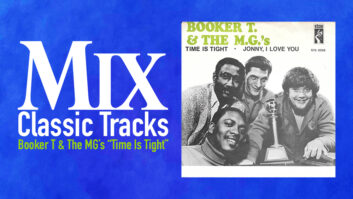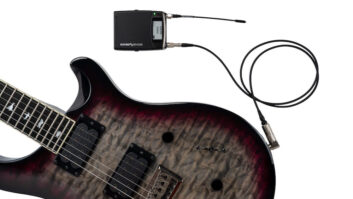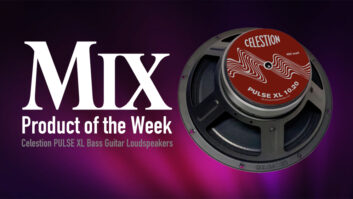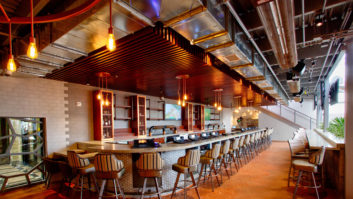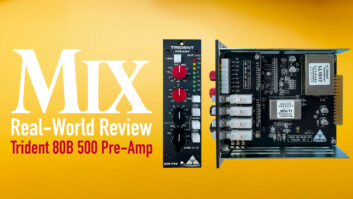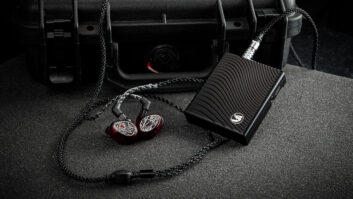Attention recording engineers: Are you looking to inspire guitarists and capture noteworthy tones? A nice guitar preamp and digital amp simulations can get you there quickly and easily, but don’t ignore the special possibilities of getting your hands dirty: creative tube implementation may seem like tedious work, but once you try it, you’ll likely be hooked. The slightly burnt smell, warm glass and tactile fun of tube swapping is geeky fun, as it delivers tones that always excite the “let’s-have-it-louder-than-hell, feedback-loving teenage guitar hero” that this old body still nourishes somewhere deep inside.

Power Tubes
Power tubes are the ones you really must keep an eye (ear?) on. If you crank a guitar amp with regularity, you should be changing these out two or three times a year. You know they’re bad when the amp sounds “congested” or “phlegmy,” with mushy bass response, lower volume output than normal and ever-worsening symptoms. On many amps you’ll need to have the bias set for ideal comparability with the particular set of tubes you install (they are often sold in matched pairs or quads) and their specific electrical response. Some amp manufacturers (e.g., Mesa Engineering) sell tubes already matched to their amps, thus rebiasing is never necessary.
If your amp can use multiple tube models (the 6L6, 6550 or EL 34, for example) then you simply must try all options! Keep in mind that this is not tedious: just part of the artistry! Even though much of the buzz, sizzle and bite of amp distortion comes from preamp tubes, many amps finally jump to attention when their power amp tubes (or sometimes the last preamp tube, the phase inverter) cross the threshold into distortion; the addition is the sound of power and muscle, albeit with some sag, but heft throughout. Power tubes provide deeper frequencies than the preamp grind, and much more viscerally; it can be the secret ingredient to getting feedback that swells controllably with musicality and body, not irritating whine.
I’ve found that this sweet feedback is effortless with EL 84 power tubes. These little “lipstick case” tubes don’t last very long or offer much useful bass output, but boy — do they sing with a musicality that makes high pitched single notes sustain like creamy butter! The EL 34, which is a little temperamental and fragile, offers more bottom end than the EL 84 and it is wonderfully compressed down there — maybe not too punchy, but super-saturated and musical, especially at high volumes. The 6L6 is the hardiest of the bunch, with by far the most low-end punch and overall dynamics. If the EL 34 is saggy, bright, somewhat buzzy and chewy on the top end, then the 6L6 is glassy and sharply focused: not as inherently bright and trebly, capable of razor-slice sharp performances, if pushed. The 6550 (Coke bottle-shaped) will often work in lieu of the 6L6; the 6550 and 6L6 do sound similar, are equally durable and dynamic, but offer a unique midrange quality.
Things can get really interesting if an amp has a half- or quarter-power switch. Obviously, the amp can therefore distort the power section at lower volumes, but that’s the main point when live and performing onstage; in the studio, we can use the power section to fine-tune our response. Try full power settings for maximum punch and dynamics, use lower power settings for more growl, throatiness or sustained feedback.
Preamp Tubes
I recently went through every amp in my studio over two days: tested tubes, as I can still buy great old models for cheap on eBay; briefly touched the tube socket connections to the PCBs with a really hot soldering gun (these get quite hot and strained during use and transport, so they often fail and cause little crackles and pops); identified the crucial first preamp tube, the one that gets burdened with the bulk of the gain and cannot be even slightly microphonic or noisy (although sometimes the phase inverter is more crucial, e.g., in Fender amps); and experimented with swapping out models in these all important positions. I went through almost 60 tubes (from working amps, new acquisitions and my “spares” box, too). Do you know how many preamp tubes sounded bad? Only three of them! They’re not like power tubes; honestly, I believe people often prematurely replace preamp tubes out of paranoia.
I have this old Chandler TDR-101 guitar preamp — old school Chandler, not to be confused with Wade Goeke’s Chandler Ltd. — and the original Chandler-branded 12AX7 sounded ridiculously great in every amp I put it in: colorful, really dirty, but with a certain classy refinement. An old Telefunken flat-plate ECC83 is unique: not as distorted, but with glassy highs and nice touch sensitivity. NOS (new old stock, manufactured long ago but never used or sold) militaryspec tubes are still floating around out there; I had a JAN-Phillips 12AT7WC and a GE JAN 12AX7WA, both offering articulation and special clarity to their voicings. (I’m gonna have to try them both in compressors, not amps!)
I had a bunch of newer Sovtek tubes in my amps, though I didn’t like them as much as those mentioned above, though I’m the odd man out here as Sovtek tubes are super-popular right now. A Hungarian 12AX7 from Westinghouse had smooth distortion at high gain and gleaming cleans with low gain. I also had dozens of 12AX7s from Groove Tubes, JJ, Electro-Harmonix and even three veryold Lowery Organ ones that all sounded great and are holding up well, too.
Don’t forget to try different models of preamp tubes: the 12AX7 and 7A have the most gain (gain factor of 100, the same as a European ECC83 or 7025); the 12AT7 and ECC81 have a little less (gain factor of 60); and the 12AY7 (gain factor of 44) and 12AU7A (gain factor of 20) offer a lot less. Less gain equals more headroom, more definition and less feedback. Older amps use a tube in their reverb circuit as well; switching out this tube offers some performance variation and, in a pinch, is a good place to put your most questionable (or noisiest) tube.
A tube amp is not static thing. It is a flexible performing entity that can be molded, milked and manipulated to great results — and we haven’t even touched on the subjects of transformers, capacitors or speakers! Sure, when the clock is ticking and your client is drumming their fingers, click your amp sim and “get ‘r done.” Be glad that such modern conveniences work so brilliantly. Then, when your client is gone, line up your amps on the bench, set up a 4×12 cab, warm up the soldering iron, invite a buddy over and have him bring a six-pack. It’s time to have a little tube-y fun in the pursuit of distinctive guitar tracks!
